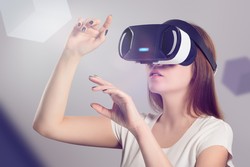Human spatial processing
Spatial information helps humans complete various routine tasks. We use two frames of reference to represent objects’ locations: one frame relative to the body, the other with respect to additional objects. The EU-funded MAPSPACE (How humans encode, represent and use basic spatial information in perception and action: Behavioral and neural evidence) project compared the two frames. The team demonstrated that the way humans use each varies depending on the task. Variables include whether the action requires body movement, whether the object is manipulable, and whether the action requires recovered memories or current visual information. Researchers conducted eight behavioural experiments involving 192 participants. Four experiments involved volunteers memorising positions and names of sets of 2D figures and 3D objects. Participants were asked to point to the locations of various objects with respect to themselves or other objects. Subjects in the other four experiments responded verbally to questions about objects and their positions. The study determined that people are more accurate when pointing to objects with respect to themselves rather than in relation to other objects. Additionally, the subjects more accurately indicated spatial relationships among objects when using memory, 2D figures and verbal responses. Such results indicated that the four kinds of spatial representation have different purposes. The most relevant daily information concerns needed objects and their locations relative to the body, explaining why participants were especially competent at retaining such information. The study participants were most able to define spatial relationships in relative terms, and less able to use objective distances. The team concluded that relative spatial relationships were easier to memorise and use. Functional MRI studies detailed the neural basis of the four spatial representations. Results indicated that even in non-motor tasks, brain areas responsible for movement were more active when the spatial information was referenced to the body. The team also concluded that medio-temporal parts of the brain are involved in encoding abstract relational information. MAPSPACE results are clinically relevant because they support assessment of visuo-spatial deficits in a rehabilitation context. The project’s work will allow more precise diagnosis.







